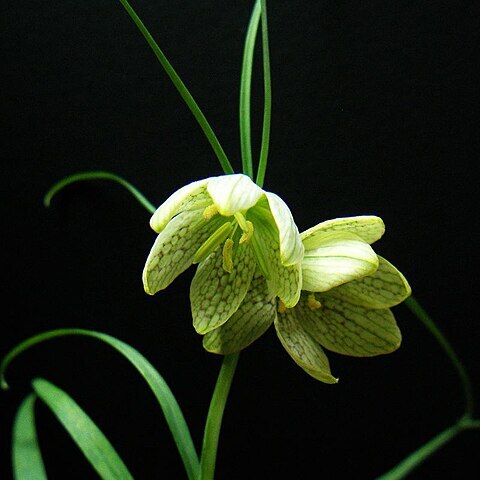A bulb plant. It grows 60 cm high. The leaves are slender and mid green and in rings. There are 2 leaves opposite each other at the base then 4-7 leaves in a ring. The flowers are in loose spikes or up to 15 bell shaped flowers. They are white with faint green lines.

